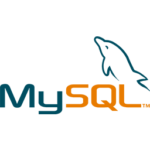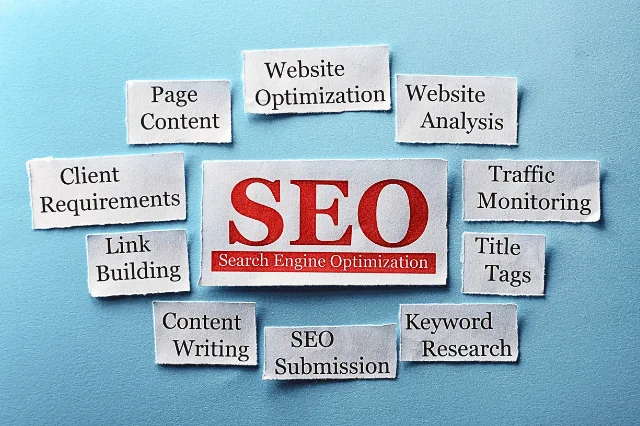Website Design

Website Design
We offer following types of Website Design Services
- Static Website
- Dynamic Website
- AMP Website (fast Loading Sites
- WordPress/Blogger Website
- E-commerce Website
Static Websites
Static websites consist of fixed content that does not change in response to user interactions or other dynamic factors. Each page of a static website is a separate HTML file, which is sent to the user’s browser as is. This simplicity makes static websites fast, secure, and easy to host and maintain.
Key Features of Static Websites
- Fixed Content:
- The content remains the same for every user and doesn’t change unless manually updated by the developer.
- No Server-Side Processing:
- No back-end scripting languages (like PHP, Ruby, Python) are involved. The content is served directly from the server without any server-side logic.
- High Performance:
- Static websites load faster because there are no database queries or server-side processing. The content is served directly as HTML, CSS, and JavaScript files.
- Low Cost:
- Static websites are cheaper to host because they don’t require a server with dynamic processing capabilities. They can be hosted on simple web servers or even via content delivery networks (CDNs).
- Security:
- With no server-side processing or databases, there are fewer vulnerabilities. Static sites are less susceptible to common web attacks like SQL injection or cross-site scripting (XSS).
- SEO Friendly:
- Static sites are easily crawled by search engines because the content is directly available in the HTML files.
Examples of Static Websites
- Personal Blogs: Simple blogs without dynamic content.
- Portfolio Sites: Showcasing work or projects.
- Landing Pages: Promotional pages for products or services.
- Documentation Sites: Sites hosting static documentation.
How to Create a Static Website
- HTML, CSS, and JavaScript:
- Write the website using HTML for structure, CSS for styling, and JavaScript for any client-side interactivity.
- Static Site Generators:
- Use static site generators like Jekyll, Hugo, Gatsby, or Eleventy to create and manage your site. These tools help generate static HTML files from templates and content files (usually written in Markdown).
- Development Tools:
- Use text editors or integrated development environments (IDEs) like Visual Studio Code, Sublime Text, or Atom for coding.
Dynamic Websites
Dynamic websites are those that display different content and provide user interaction by dynamically generating web pages based on user input, server-side scripting, and databases. Unlike static websites, where content remains the same for every visitor, dynamic websites can display personalized content and are often driven by complex functionalities.
Here are the key features and components of dynamic websites:
Key Features
- Content Management:
- CMS: Most dynamic websites use Content Management Systems (CMS) like WordPress, Joomla, or Drupal, which allow for easy content updates without requiring coding knowledge.
- User Interaction:
- Forms: Dynamic websites often include forms for user input, such as login forms, registration forms, feedback forms, etc.
- Interactive Elements: These can include things like user comments, ratings, polls, and interactive maps.
- Database Integration:
- Backend Databases: Dynamic websites often rely on databases like MySQL, PostgreSQL, or MongoDB to store and retrieve data.
- Dynamic Content: Content is fetched from databases and rendered dynamically based on user requests or interactions.
- Server-Side Scripting:
- Languages: Common server-side scripting languages include PHP, Python, Ruby, JavaScript (Node.js), and ASP.NET.
- Dynamic Content Generation: Server-side scripts generate HTML content on the fly based on user input and database queries.
- Personalization:
- User Profiles: Dynamic websites can create personalized experiences based on user profiles and preferences.
- Session Management: User sessions are tracked to provide continuity and a personalized experience across different visits.
- APIs and Integrations:
- Third-Party Services: Dynamic websites often integrate with third-party APIs for services like payment gateways, social media, and geolocation.
- RESTful APIs: Use of RESTful APIs to interact with backend services and retrieve or update data.
- E-Commerce:
- Shopping Carts: Dynamic websites can include shopping carts and payment processing for e-commerce functionalities.
- Product Management: Products and services can be dynamically managed and displayed based on inventory data.
Examples of Dynamic Websites
- E-Commerce Sites: Amazon, eBay, and other online shopping platforms.
- Social Media Sites: Facebook, Twitter, Instagram.
- News Portals: CNN, BBC, New York Times.
- Online Learning: Coursera, Udemy, Khan Academy.
- Booking Systems: Airbnb, Booking.com, Expedia.
How to Create a Dynamic Website
- Choose a Technology Stack:
- Front-End: HTML, CSS, JavaScript (with frameworks like React, Angular, or Vue.js).
- Back-End: Node.js, PHP, Python (Django/Flask), Ruby on Rails, Java (Spring), etc.
- Database: MySQL, PostgreSQL, MongoDB, SQLite, etc.
- Set Up a Development Environment:
- Install necessary software (web server, database server, development tools).
- Use version control systems like Git.
- Design Database Schema:
- Plan and create the database schema according to the needs of the application.
- Develop Server-Side Logic:
- Write server-side code to handle requests, process data, and interact with the database.
- Develop Front-End:
- Create responsive and interactive UI using HTML, CSS, and JavaScript.
- Connect the front-end with the back-end using AJAX, Fetch API, or other methods.
- Integrate APIs and Services:
- Integrate third-party APIs for additional functionalities like payment processing, social login, etc.
- Testing:
- Test the application thoroughly for functionality, performance, and security issues.
- Deployment:
- Deploy the website on a web server or cloud service (AWS, Azure, Google Cloud, etc.).
- Maintenance:
- Regularly update the website for security patches, new features, and performance improvements.
Amp Websites
AMP (Accelerated Mobile Pages) is a web component framework that helps create fast-loading mobile web pages. It was initially developed by Google and is now maintained by the open-source AMP Project. AMP pages are designed to improve the performance and speed of web pages on mobile devices, enhancing the user experience. Here are some key features and aspects of AMP websites.
- Speed: AMP pages load faster than traditional web pages by utilizing a streamlined version of HTML and a limited set of JavaScript.
- Caching: AMP pages are cached by Google AMP Cache, which helps in faster loading times as the content is served from a location closer to the user.
- Prioritized Content: AMP emphasizes above-the-fold content, ensuring that critical content is displayed first.
- Consistent Performance: By adhering to AMP guidelines and restrictions, developers can ensure consistent performance across various devices and network conditions.
- Simplified Design: AMP HTML is a subset of HTML with some restrictions and additional tags for better performance and design consistency.
- SEO Benefits: AMP pages often receive a boost in search engine rankings due to their speed and mobile-friendliness. They may also appear in the Google Top Stories carousel.
- AMP Components: AMP provides a set of custom elements (AMP components) like amp-img, amp-video, amp-ad, etc., which are optimized for performance.
- Analytics: AMP supports various analytics tools to track user interactions and performance metrics.
WordPress Websites
WordPress is a widely-used content management system (CMS) that allows users to create and manage websites easily. It is known for its flexibility, extensive plugin ecosystem, and user-friendly interface. Here’s a comprehensive overview of WordPress websites:
Key Features of WordPress Websites
- User-Friendly Interface:
- Dashboard: The WordPress dashboard is intuitive, making it easy for users to manage content, settings, and plugins.
- Visual Editor: The built-in Gutenberg editor allows for easy content creation with a block-based interface.
- Themes and Customization:
- Themes: Thousands of free and premium themes are available to customize the appearance of your website.
- Customization: Themes can be customized using the WordPress Customizer, allowing changes to layout, colors, fonts, and more.
- Plugins:
- Extensibility: Over 58,000 plugins are available in the WordPress repository, allowing you to add functionalities like SEO, social media integration, e-commerce, security, and more.
- Custom Plugins: Developers can create custom plugins to add specific functionalities.
- SEO Friendly:
- SEO Plugins: Plugins like Yoast SEO and All in One SEO Pack help optimize your site for search engines.
- Permalinks: Customizable URL structures improve SEO and user experience.
- Content Management:
- Posts and Pages: Easily create and manage blog posts and static pages.
- Media Library: Upload and manage images, videos, and other media files.
- Community and Support:
- Community: A large, active community provides support, themes, plugins, and tutorials.
- Documentation: Extensive documentation and tutorials are available on the WordPress.org website.
- Security:
- Updates: Regular updates to core software, themes, and plugins enhance security.
- Security Plugins: Plugins like Wordfence and Sucuri offer additional security features.
- E-Commerce:
- WooCommerce: A powerful e-commerce plugin that transforms a WordPress site into an online store.
Setting Up a WordPress Website
- Choose a Domain and Hosting:
- Domain Name: Choose a memorable and relevant domain name.
- Hosting Provider: Select a hosting provider that offers WordPress hosting. Popular options include Bluehost, SiteGround, and WP Engine.
- Install WordPress:
- One-Click Install: Most hosting providers offer a one-click WordPress installation.
- Manual Install: Download WordPress from WordPress.org, upload it to your server, and follow the installation instructions.
- Select and Install a Theme:
- Free Themes: Browse the WordPress theme repository for free themes.
- Premium Themes: Purchase themes from marketplaces like ThemeForest or Elegant Themes.
- Install Theme: Install and activate your chosen theme from the WordPress dashboard.
- Install Essential Plugins:
- SEO: Yoast SEO or All in One SEO Pack.
- Security: Wordfence or Sucuri.
- Backup: UpdraftPlus or BackupBuddy.
- Performance: W3 Total Cache or WP Super Cache.
- Create Essential Pages:
- Home Page: The main landing page.
- About Page: Information about you or your business.
- Contact Page: Contact form and information.
- Blog Page: If you plan to write blog posts.
- Customize Your Site:
- Menus: Create and manage navigation menus.
- Widgets: Add widgets to sidebars and footers.
- Custom CSS: Use custom CSS to tweak the design.
- Add Content:
- Posts and Pages: Start adding blog posts and static pages.
- Media: Upload images, videos, and other media.
Managing and Maintaining a WordPress Website
- Regular Updates:
- Keep WordPress core, themes, and plugins updated to the latest versions.
- Backup:
- Regularly back up your website using plugins like UpdraftPlus or your hosting provider’s backup service.
- Security:
- Monitor security with plugins and implement best practices like strong passwords and limiting login attempts.
- Performance Optimization:
- Use caching plugins, optimize images, and consider a CDN (Content Delivery Network) for faster loading times.
- SEO:
- Continuously optimize your content and website structure for search engines.

Mobile Friendly

Responsive

SEO

Beautiful Design
Comparision
At Twobeginers We are Affordable Website Design Company in Odisha, No One can Beat our Price and Quality.
Low Cost
Support
Value
Our Web-Design
40+ Categories
2000+ Website Themes
3000+ Customers
Web-Design Features
Static Website
-
Responsive Website
-
Free SEO
-
Mobile Friendly
-
Beautiful Design
-
Fast Loading
-
Live Chat Integration
-
Whatsapp Chat Button
-
Direct Call Button
-
Social Share button
-
PopUp & CountDown
-
Payment Link
-
Analatics Integration
-
Search Engine Submission
-
No Maintenance
Dynamic Website
-
All Static Features
-
CMS Panel
-
Login System
-
Payment Gateway Integration
-
Leads Generation
-
E-Commerce Setup
-
Live Chat Integration + Mutiple Agent
-
Sms Integration
-
Contact Form
-
Full SEO
-
Unique Logo
-
Google Map Integration.
-
Youtube Video Integration
-
Place Ads
Our Technologies














